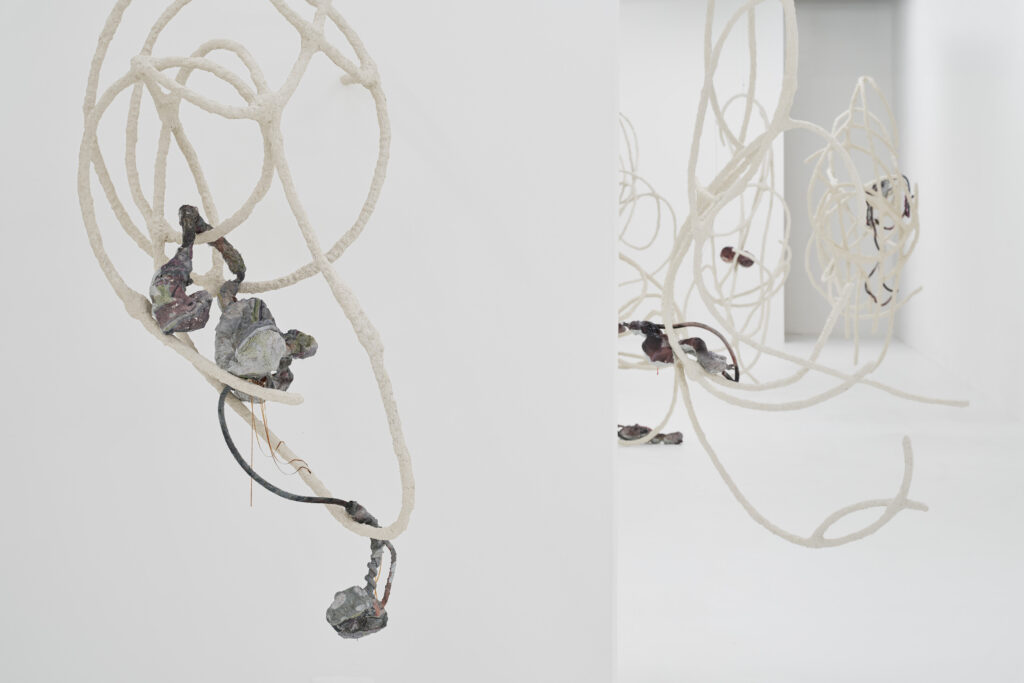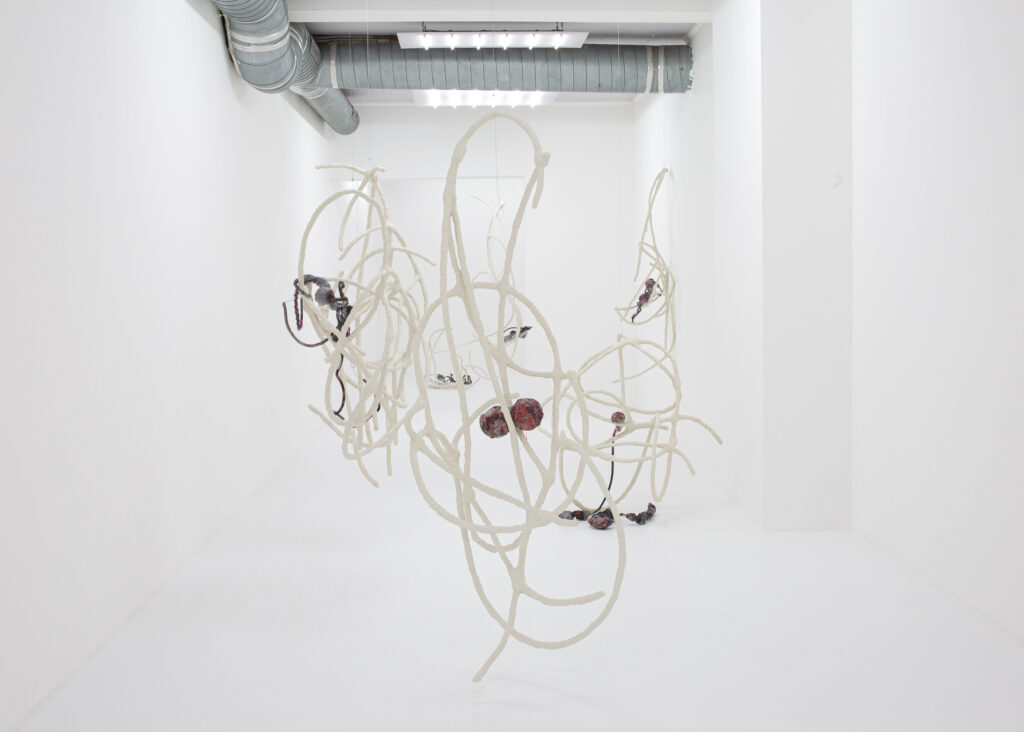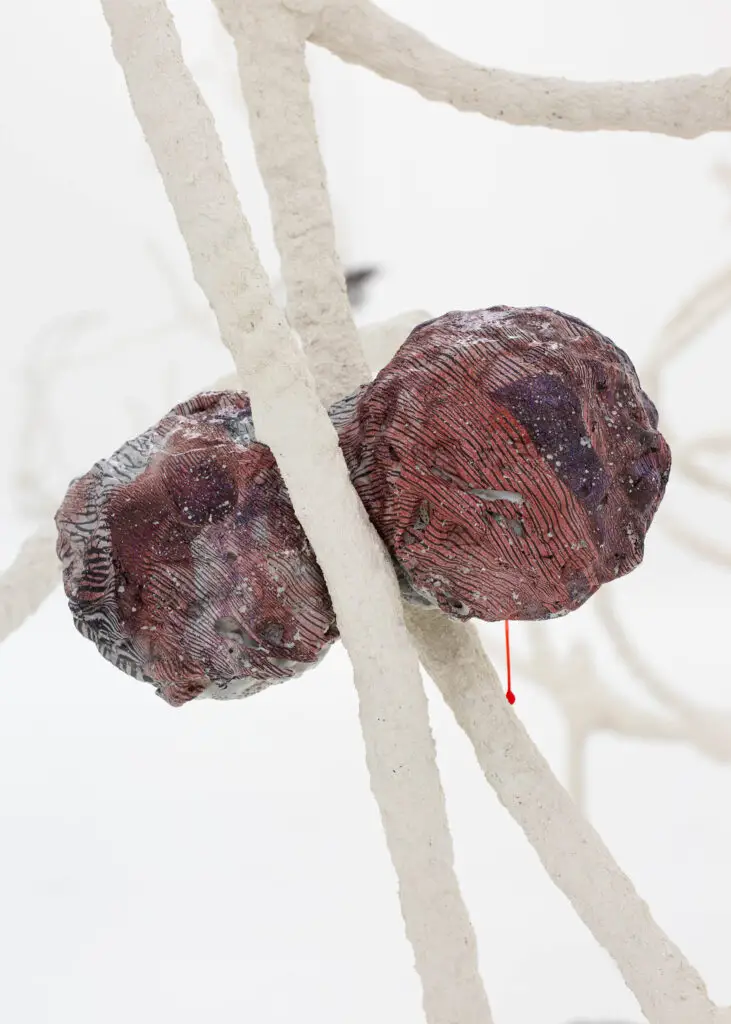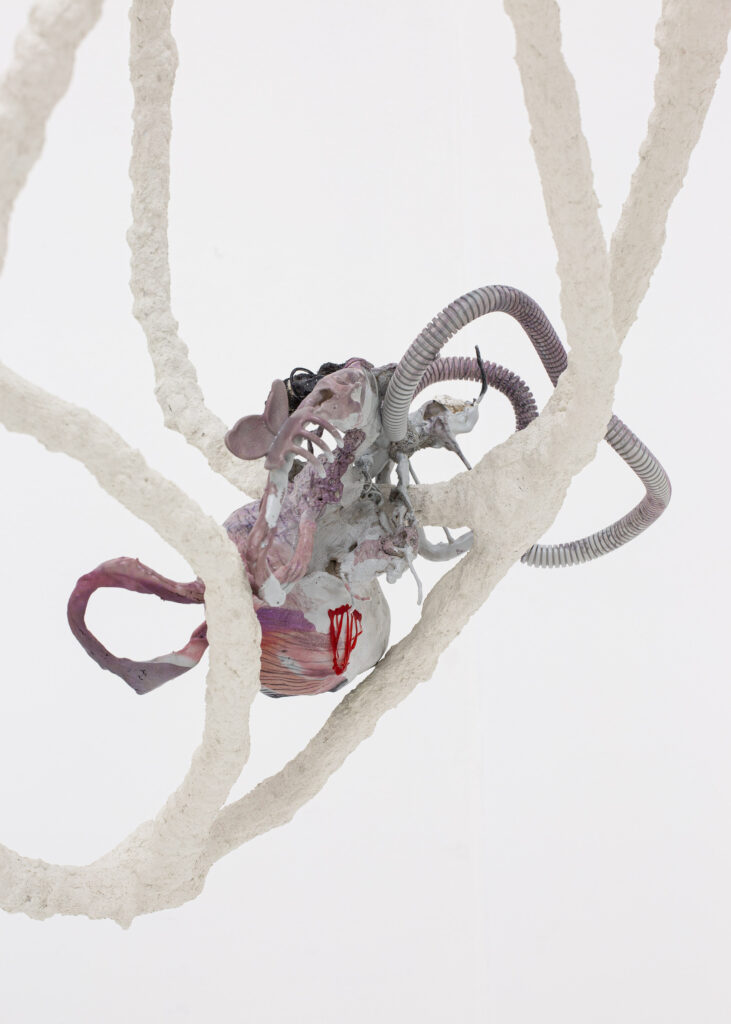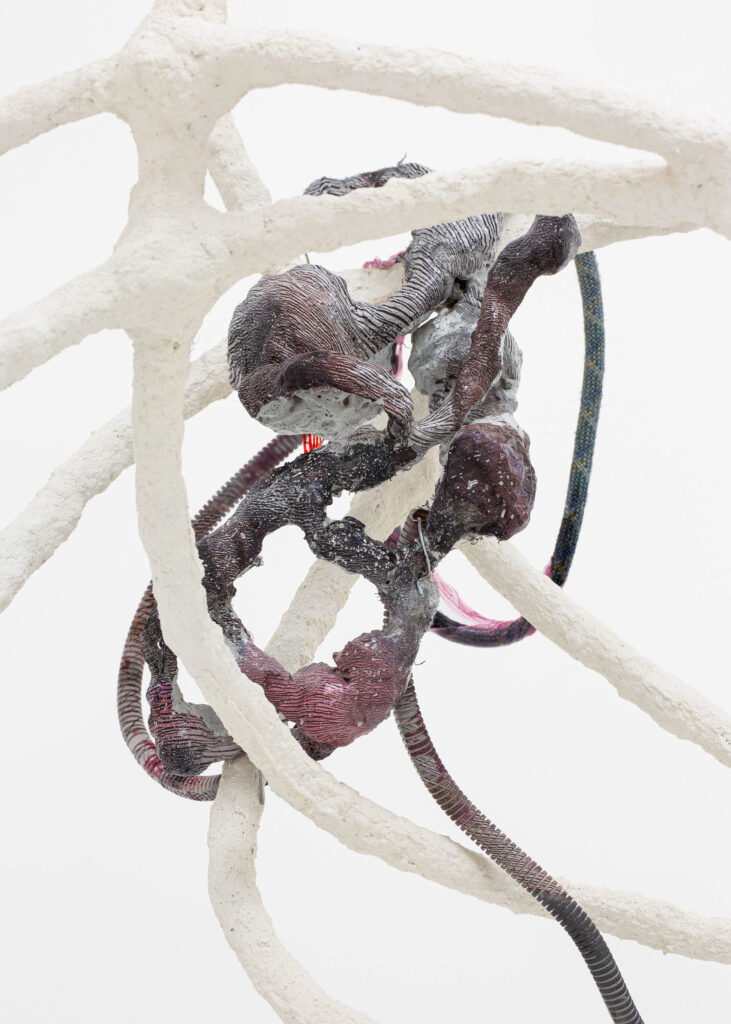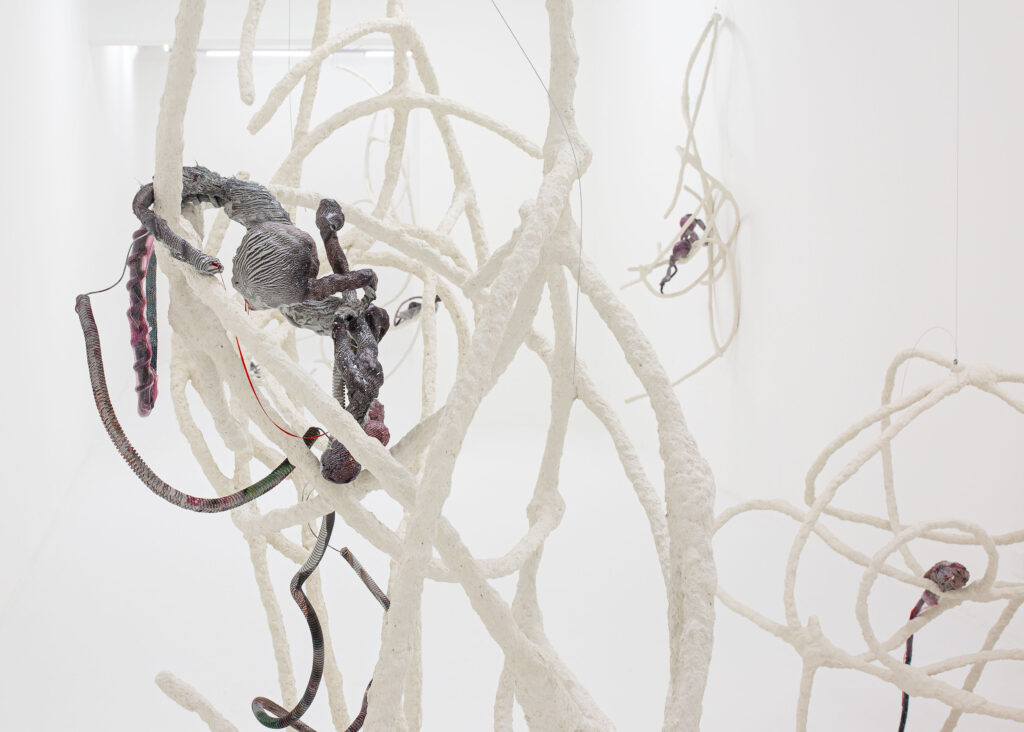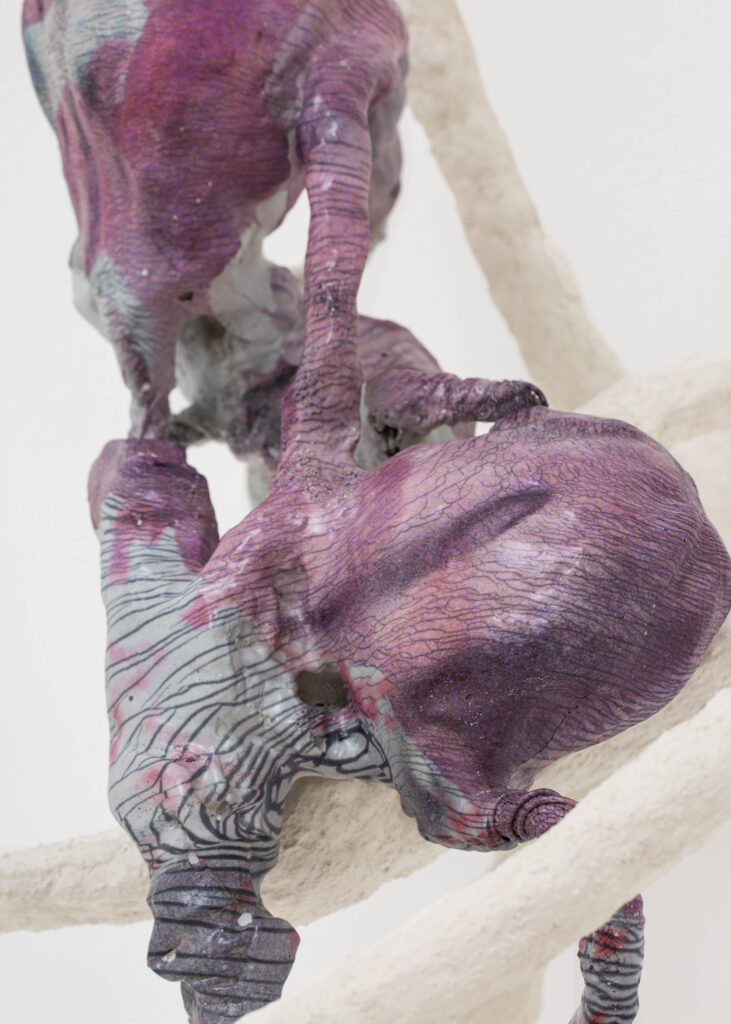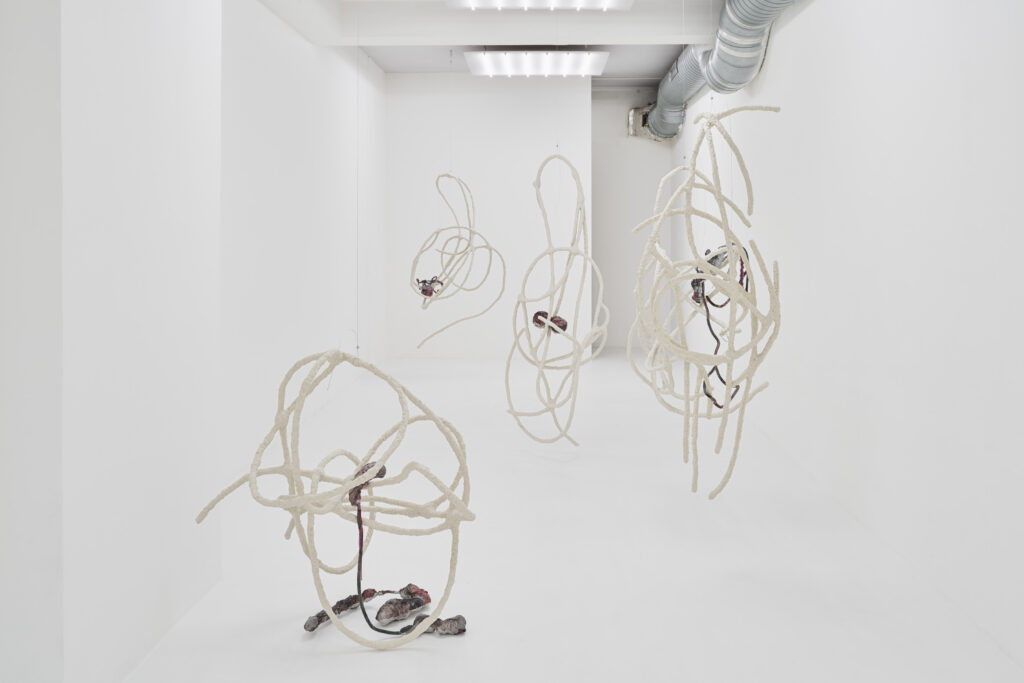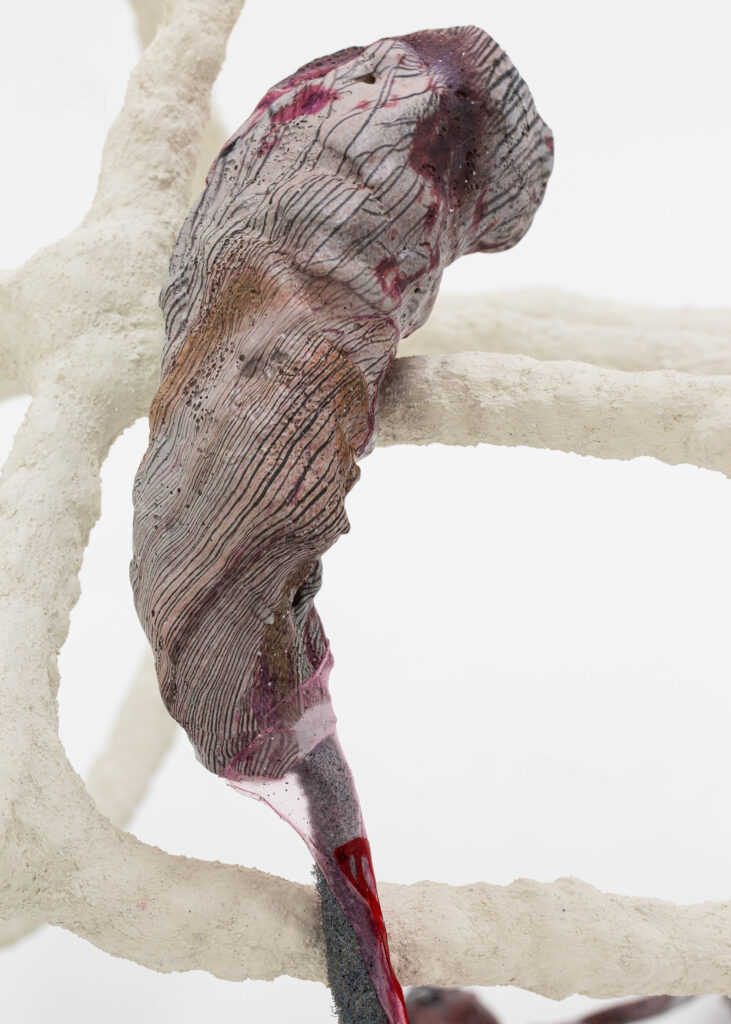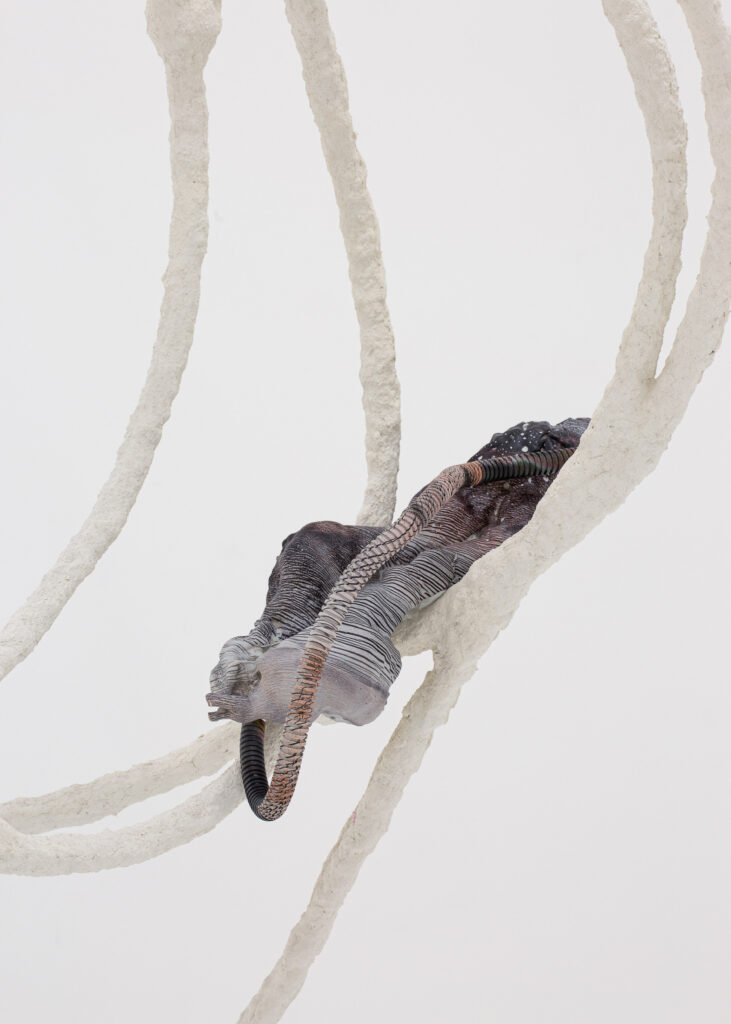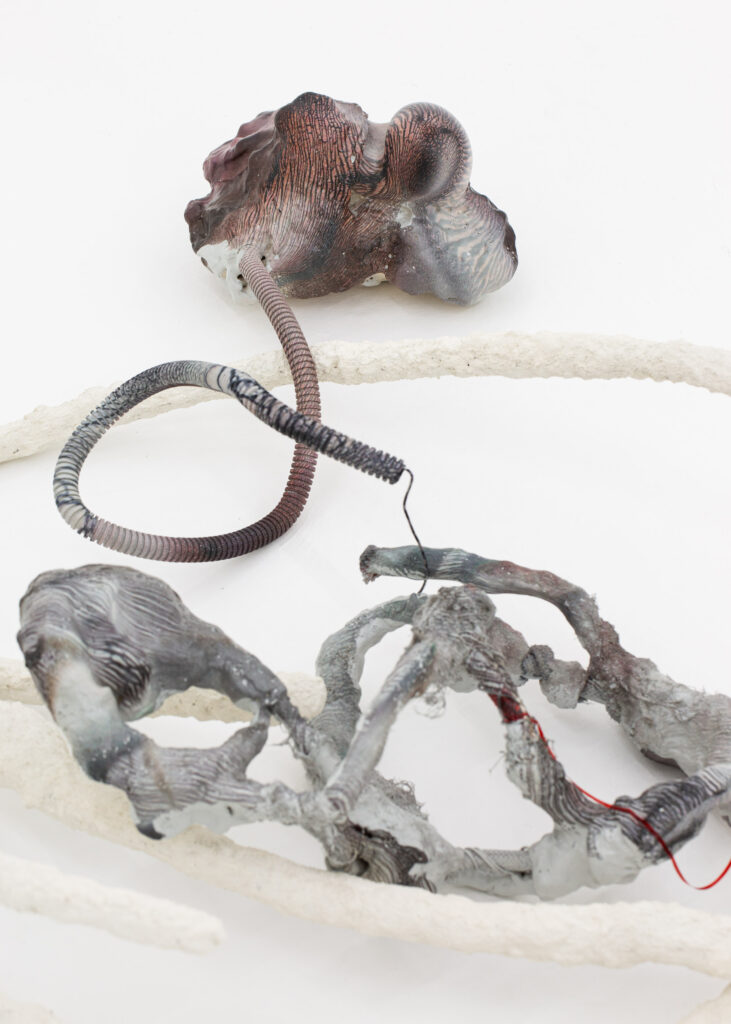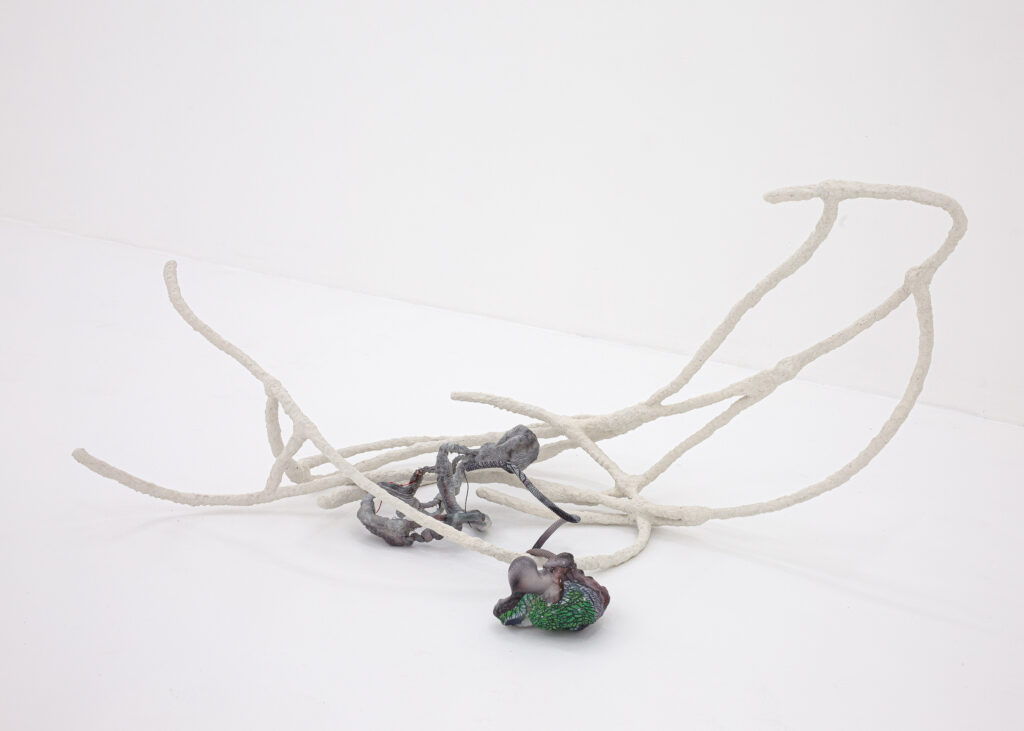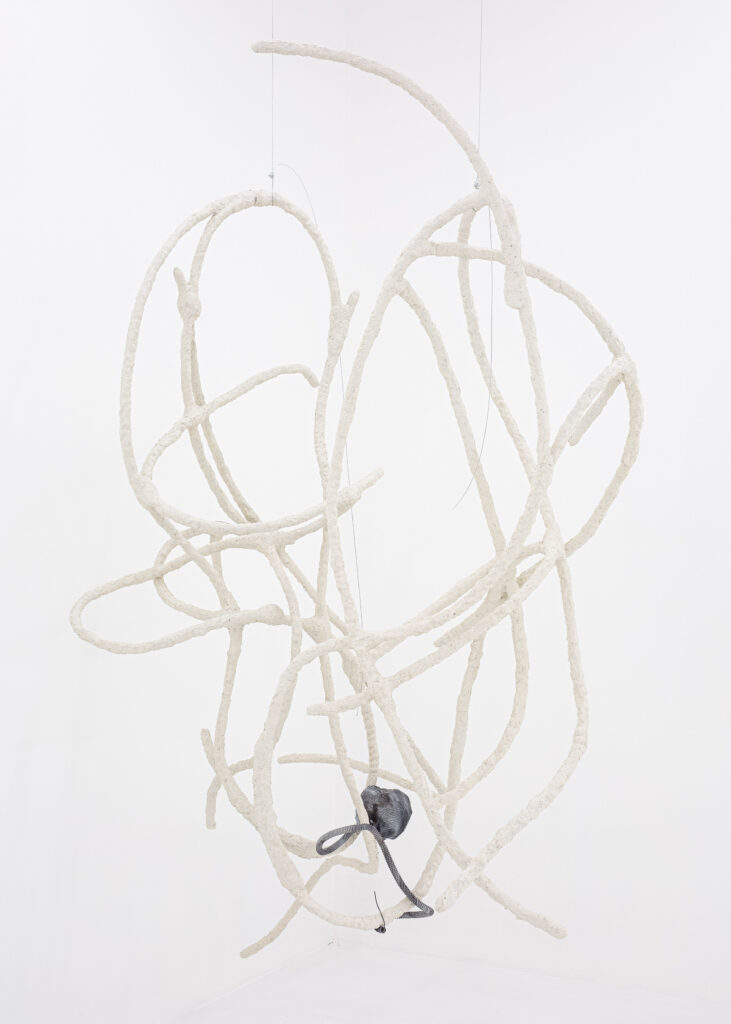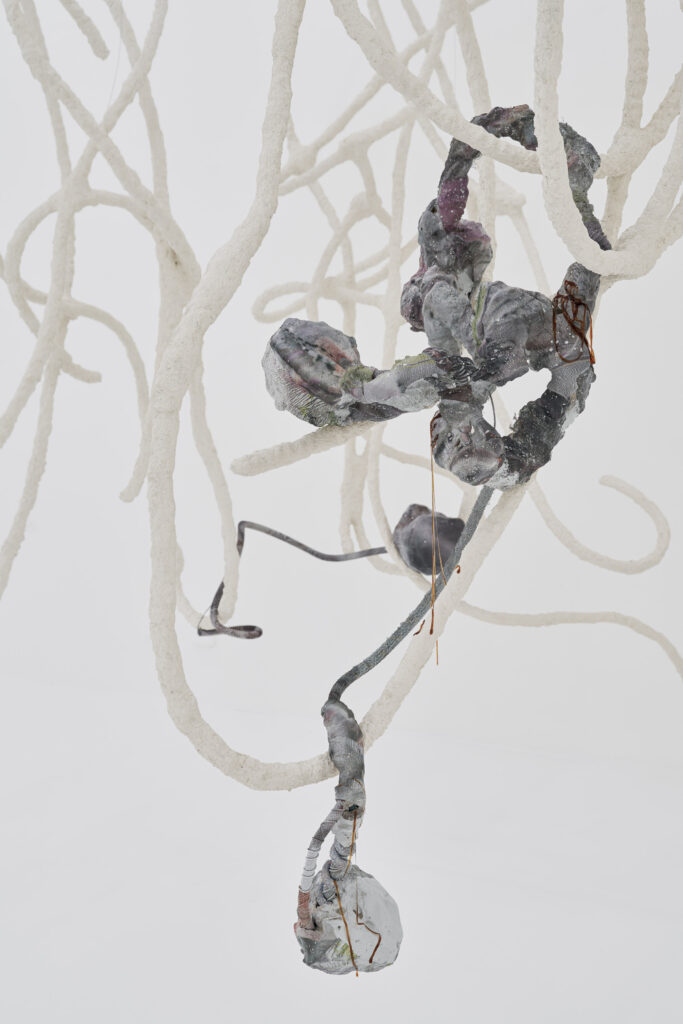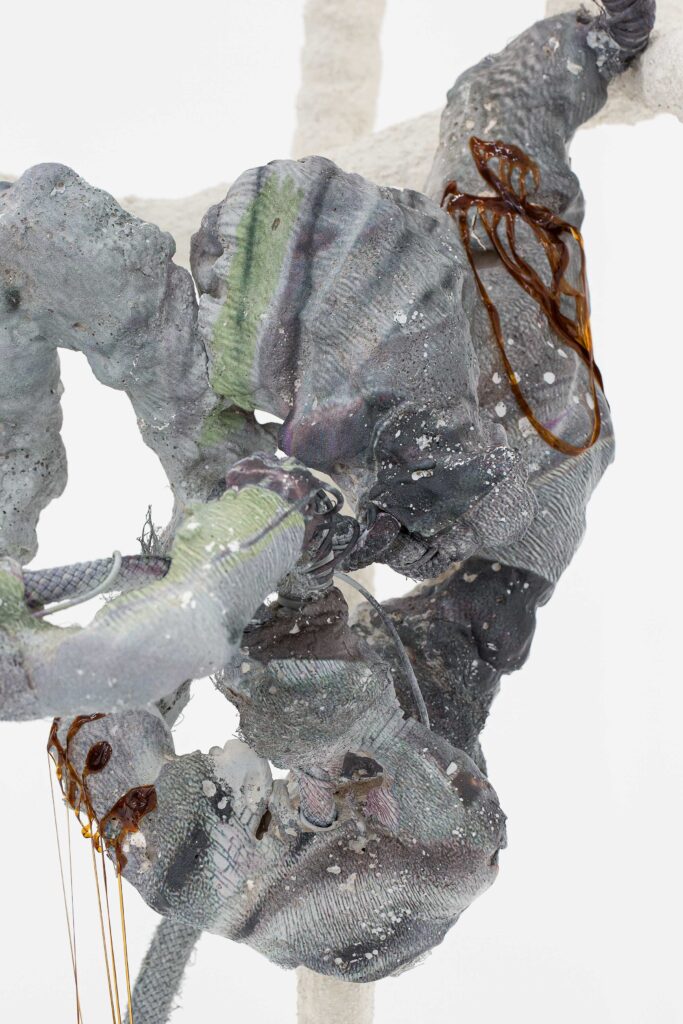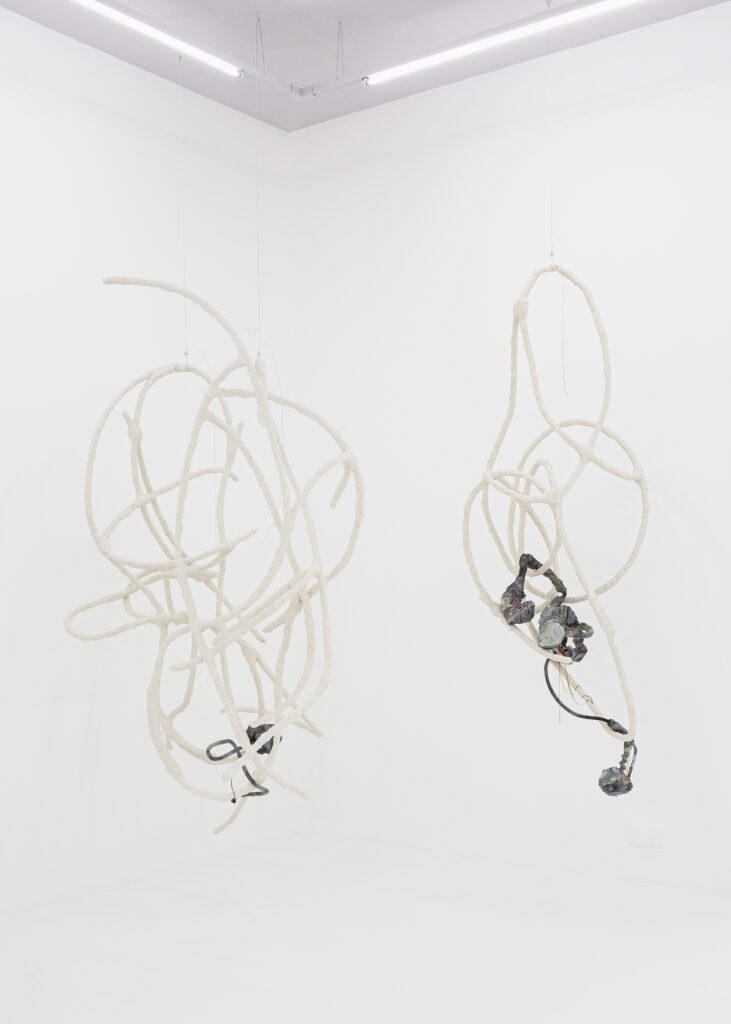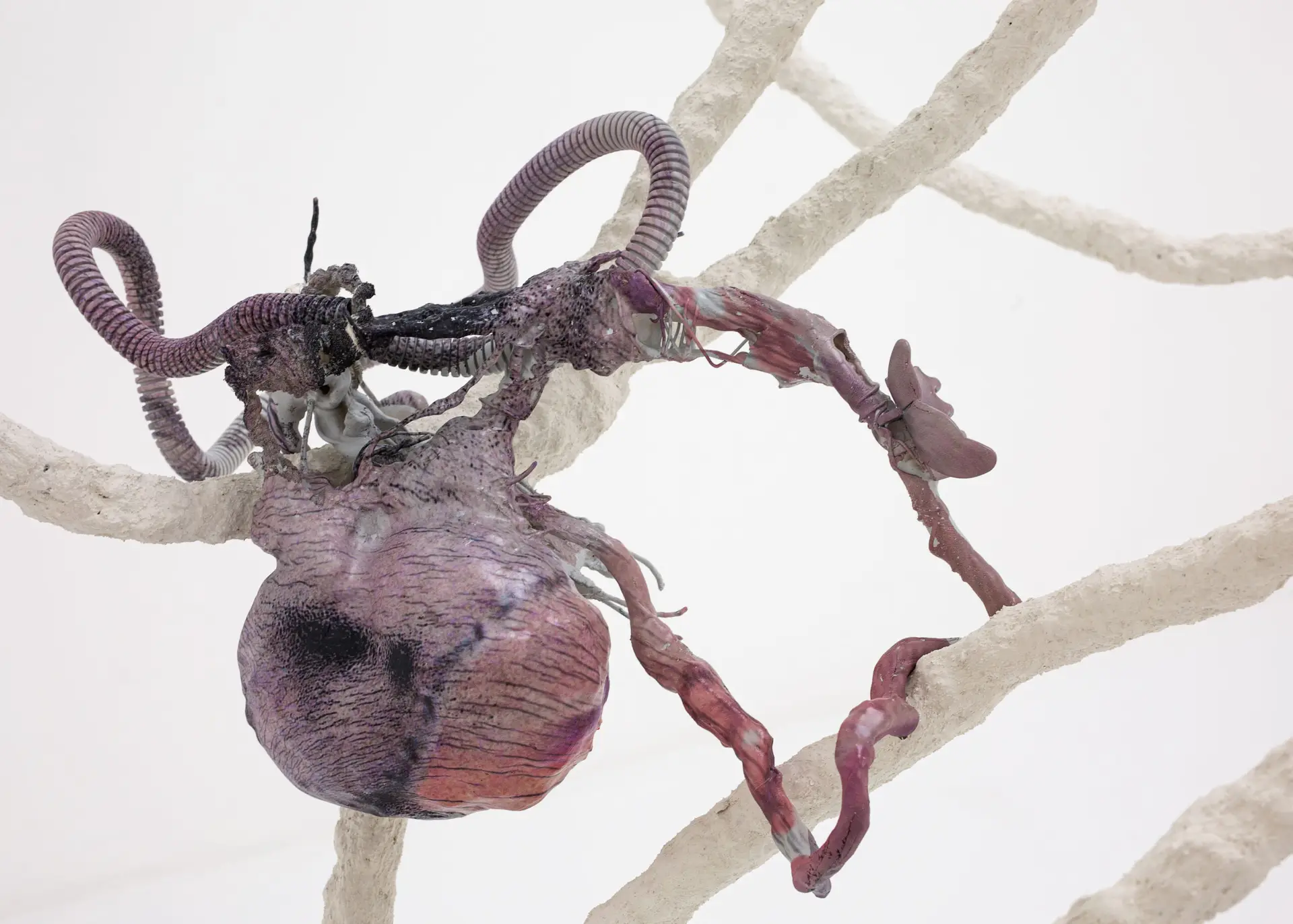Artist: Lenka Glisnikova
Title: Sunken Streams
Curator: Pavel Kubesa
Venue: Galerie NoD, Prague
Photos: Michal Ureš
“Light and Time. The characters are trying to build structures
through which they can escape from the limitations of self. You
could say the sense of ourselves, of our physical bodies, that we all
have is in itself a sort of small death – because of its enormous
limitations. We find it very difficult to break through that small death
to a larger world… (…) Self-destruction is one of the worst sins you
can commit, but of course the destruction of self is necessary to
achieve Nirvana – freedom from self and identification with whatever
you like to call them, the unseen powers of the universe.”
– J. G. Ballard in an interview for Literary Review (August, 1984)
In the piano work La cathédrale engloutie (The Sunken Cathedral, 1910) the ancient Celtic myth of Ys resurfaces – a port metropolis built by King Gradlon, lying in a hollow beneath the waters of the Breton shallows in the bay of Douarnenez. The legend tells of Gradlon’s daughter Dahut who – against the warning of a saint – driven by her thirst for power and pleasure, opened the sea gates that protected the city from flooding. The ruin, born of human pride, engulfed Ys beneath the raging waters of the ocean. From the depths of the sunken city, so it is said, the bells of its churches can still be heard.
The tenth piece in the first book of Debussy’s Préludes was never conceived as pure program music. Yet its dramaturgical arc follows the trajectory of the ancient myth, tracing the terrain of the story through purely musical imagination: the opening bars establish a fog-like twilight from which distant, lost bells are faintly heard; gradually the contours of the submerged cathedral and the city of Ys emerge, until all is swept away again, dissolved and drowned beneath the surface of the sea. The slow tempo and veiled articulation convey a sense of continuous duration, a measure of geological time. The piece, a metaphor of slow emergence and disappearance, memory and forgetting, is at once also an image of fleeting human hybris, arrogant pride confronted with the superhuman persistence of the ocean. This very theme – the desire to transgress limits and disrupt the order of the world – reverberates through J. G. Ballard’s “space-sickness” novels, in which motifs of light and time are bound to the collapse of social and inner reality. In his short story News from the Sun (1981) he reflects on the “space age” as “an act of evolutionary piracy”:
“By leaving his planet and setting off into outer space man had
committed an evolutionary crime, a breach of the rules governing his
tenancy of the universe, and of the laws of time and space. Perhaps
the right to travel through space belonged to another order of beings,
but his crime was being punished just as surely as would be any
attempt to ignore the laws of gravity. (…) Each space-launch left its
trace in the minds of those watching the expeditions. Each flight to
the moon and each journey around the sun was a trauma that
warped their perception of time and space. The brute-force ejection
of themselves from their planet had been an act of evolutionary
piracy, for which they were now being expelled from the world of
time.”
– J. G. Ballard, News from the Sun
In Ballard’s fiction, humanity is afflicted by a temporal malady in which people sink from wakefulness into ever longer lapses of consciousness, into sleep, into socalled “fugues,” where temporal awareness collapses. But the “fugue” is not merely a disorder: Ballard stylizes it as a possible escape from the machinery of linear time, an evolutionary step towards a permanent present. The characters – striving to resist the effects of the fugues – begin to master new improvisational, corporeal, spatial forms of language. Its meanings are founded in touch, in the body, in architecture, its syntax modeled by the geometry of the environment: the new language thus becomes a communicative “bridge in a presence without time,” a manual for living and loving within the fissures of time, for sustaining in the “enduring now” the continuity of action,
memory, tenderness, and desire. Debussy and Ballard provide some of the interpretative frameworks and associative routes through which we may approach Lenka Glisníková’s latest works. In her current series Sunken Streams the artist unfolds her characteristic post- photographic method, creating biomorphic sculptures embedded within suspended
spatial constructions. The basic material substratum for the modeling of these corporeally inflected objects arises from a wide register of found and recycled things and substances. Yet each object undergoes a kind of “transgenerational” genesis and is, in a sense, a descendant of works from Glisníková’s earlier series. The artist photographs her initial objects, digitally manipulates the resulting image, and then, through hydrographic transfer, imprints the altered photographs of “mothers” onto the newly forming generation of objects. The “skin” of each object thus carries the “gene” of its generational predecessors, which coil into the bodies of their offspring, folding into their visceral space. The resulting techno-somatomorphic bodies integrate the principles of “other temporalities”: each embodies the past within the present, while their suspension within spatial constructions evokes a state of hibernation, perpetual sleep, or even “final fossilization.” These very spatial structures, like Ballardian fugues, weave a specific “timelessness” for storing the temporal capsules of extinct post-natural species whose time has stopped, “Debussy-like, submerging” into the sediment of geological ages. For both Ballard and Debussy it was the archetypal motif of guilt – collective or individual – that triggered this collapse of temporal continuum: time sank, coiled, fractured, froze. The image that Lenka Glisníková constructs through her massive structures and their biomorphic inhabitants deliberately leaves the cause of extinction aside – as irrelevant. What matters is the open, speculative situation within the contours of a post-human era: we are compelled, through a haptic gaze, to weave ourselves into the surfaces of bodily textures and to stir within us the possibilities of
affective imagination. Glisníková arrives at a form of “techno-rococo” in a Deleuzian sense, where everything is subjected to the elementary force of the “fold.” For Deleuze the fold was the operator of formation: an inflection, a continuous deformation, where the inside is born through the crumpling, twisting, and enfolding of the outside. In confronting the objects of the Sunken Streams series, the viewer is similarly enfolded into enfolding surfaces, into enfolded regimes of perception and time. Within this suspended temporality a certain unconscious corporeality opens up – an opportunity
to transcend not only the frozen time of the fugues but also the limitations of the self. Lenka Glisníková thus offers the metaphor of a sinking current, a figure of reconciliation with the awareness of the temporariness of every biological – or rather post-natural – species, each of which surfaces for a while, only to disappear again beneath the crust of geological time. Its acceptance is a kind of therapeutic moment, one that allows us to integrate both finitude and timelessness into our lives.
